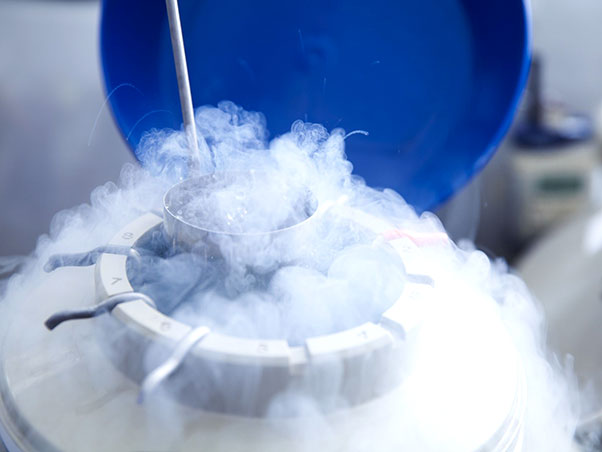
Cryopreservation of embryos is the process of preserving an embryo at -1960 temperature.
Indications :
1. Excess embryos. Embryos formed are more in number than planned to transfer than one can freeze them for future us. Advantage is if the cycle comes negative you will have embryos to thaw and transfer thus avoiding a repeat IVF cycle. If the cycle is positive , one can use these embryos for the second pregnancy or alternately donate them for use of another couple.
2. Excess embryos. Embryos formed are more in number than planned to transfer than one can freeze them for future us. Advantage is if the cycle comes negative you will have embryos to thaw and transfer thus avoiding a repeat IVF cycle. If the cycle is positive , one can use these embryos for the second pregnancy or alternately donate them for use of another couple.
There are 2 methods currently used for freezing : Slow freezing and Vitrification (ultra-rapid freezing)
Vitrification :
It involves freezing the embryo about 600 times faster than slow freezing technique. Vitrification in contrast to slow freezing is an efficient method for cryopreservation. This ultrarapid process is so fast that it literally allows no time for intracellular ice to form. As a result, vitrification avoids trauma to the embryo.
In conventional (slow) freezing, 20-30% of embryos do not survive the freeze-thaw, and those that do survive have less than half the likelihood of generating a pregnancy as do fresh embryos. In contrast, vitrified embryos have a better than 90% freeze-thaw survival rate, and a pregnancy generating potential that is comparable to fresh embryos.
